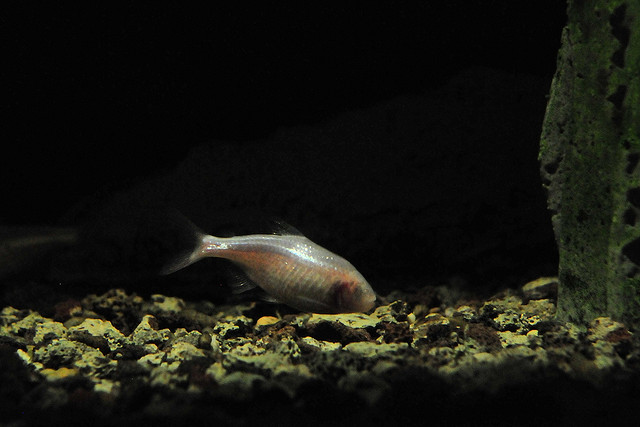Search Results for Tag: human
Ever hear of evolution ‘in reverse’?
How do you understand the term “evolution?” It’s synonymous with progress, development, advancement, right? But, sometimes evolution can also change direction.

Astyanax Mexicanus, a blind cavefish. Photo credit: CC BY-NC-SA 2.0 by Joachim S. Müller/flickr.com: http://bit.ly/1kcBaoO
Evolution is usually associated with developing new features to be able to adapt to environmental changes in certain regions. But, sometimes evolution can also go the other way. Called “regressive evolution,” the phenomenon describes nothing else but advancing in evolution by losing certain abilities or traits.
Cave-dwelling species, in particular, are affected by regressive evolution. These species have originally lived above ground and later, by geological events, were trapped below the earth’s surface. A very drastic example is Astyanax mexicanus, a blind and almost colourless, transparent fish species living in Mexican caves. It has a surface-dwelling counterpart that looks very much the same, just add a silverish color and, well, eyes. Both are the same species and are able to interbreed. In fact, the cavefish have eyes as embryos, but they never become fully developed. Instead of eyes, cavefish navigate with a tool that all fish have, a sensory system. But compared to thir overground counterparts, the blind fish system is about 50 times more effective.
It’s possible to find other examples in different habitats. Cimicidae (article in german), for example, have lost their ability to fly by regressing their wings during evolution. This also applies for lice (article in german). Snakes ran around on legs and feet a few million years ago, terrestrial vertebrates once had gills. And here’s another example we all know very well: humans. We lost our proud, ape-like tails during the process of evolution.
Do you see that as a loss? 🙂
World Water Day: Humans are guzzling too much water
With World Water Day, the United Nations will draw attention towards mankind’s water consumption, especially in industrial nations. Today, about 7 billion people live on our planet. The number is expected to grow by about 2 billion by the year 2050. Of course, each one of them will need water. That includes drinking water as well as water used in every day life, like for showering or food production. All together, that adds up to a lot of water. Just keep in mind, producing one kilo of beef consumes 15,000 liters of water, and one kilo of wheat guzzles up 1,500 liters.
The United Nations recommends a sustainable diet. That means we should be aware of how water-intensive products are. We also should reduce the amount of food we waste, says the UN. 30% of the food produced worldwide is thrown away. The water used to produce it is therefore lost forever. You can learn more about the World Water Day on the official UN website. The latest Environmental Outlook report by the OECD also draws a bleak picture on rising sea levels that are swallowing cities and millions of people who will be suffering water shortages.
The UN also provides a very interesting FAQ about the value of water. Facts and figures about water can be found from the National Geographic. If you are a U.S. resident, the National Geographic provides another interesting feature, a water footprint calculator to estimate your water use on a daily basis.




Feedback